IFFR 2012 Interview: SHINYA TSUKAMOTO talks KOTOKO
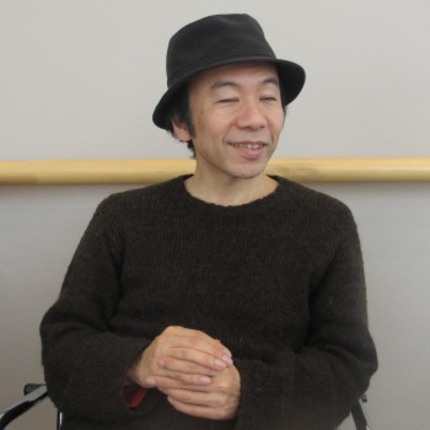
Last year Tsukamoto Shinya visited the International Film Festival Rotterdam as part of a group of directors promoting the excellent "Kaidan: Horror Classics" and ScreenAnarchy put up an interview with them all (a link to which can be found here). Thing is, within such an ensemble it was inappropriate to dedicate too much attention to any single one of them, and I sure would have loved some more time with Mr. Tsukamoto.
But this year he returned with a new film of his own: the intense drama "Kotoko" about an insane mother who becomes an increasingly severe threat to her young child. It is a film I really loved despite its parent-unfriendly subject (a link to my review can be found here) and I really appreciated getting the opportunity to talk about it with its director. Read on...
AV: Earlier this week I saw "Kotoko" and while I thought it to be a beautiful film, I do notice audience reception is mixed: many people love it and many people hate it. This is probably to be expected given the subject. You often choose for stories with strong, extreme content. How important is the audience reaction to you?
Tsukamoto Shinya: Well, when I make a film I first and foremost try to create the film I MYSELF want to create, so the audience is not part of my planning. Having said that, once a movie is finished I am very anxious to know people's reactions to it. And I feel sad when there are many negative reactions because for me that means that maybe I did not manage to create the film I had set out to create.
But when I see that my intentions successfully get picked up by the audience, then that makes me very happy.
AV: So did the reception of "Kotoko" make you sad or happy?
Tsukamoto Shinya: Based on what I have experienced I am very happy with the reactions so far. This isn't the easiest of films to understand and appreciate, to "get", and it has plenty of ability to shock people. It is one of my more complex films so I am very happy that many people seem to understand it the way I meant it.
AV: You are known for creating your projects, your films, entirely from the ground up starting with zero. What made you film "Kotoko"? Did you use an existing case study on insanity? Why did you want to film this story?
Tsukamoto Shinya: What happened is this: the lead actress, Cocco, isn't really an actress but better known as a singer-songwriter. I've been a big fan for a long time already of her songs, her music, and her views on the world, the way she communicates those in her music. For quite a while I've wanted to make a movie with her, about her visions, to visualize her inner world to people. I have interviewed her often and from those conversations there gradually grew the ideas for this movie. I've added my own themes to what we came up with and so we got to the scripting stage of "Kotoko".
AV: How did Cocco's fans react to seeing her in this film?
Tsukamoto Shinya: Bear in mind that the film hasn't been released yet in Japan, in fact it hasn't even been shown in public over there, only press screenings and the odd Internet trailer. But I have already received many reactions from fans, strong reactions, about them wanting to see the full film. They are curious because Cocco's inner aspect has not been used to base a film on before, and they want to see whether that aspect has been done justice or not.
AV: No death-threats yet? No fans saying: "What are you doing to poor Cocco in this film?"
Tsukamoto Shinya: Actually, the most common reaction I got from the few fans that have seen the entire film already is that they were really afraid of watching it, based on the trailers they saw, but that they felt that they HAD to watch the movie regardless of how scared they were.
AV: Was this the first time she was acting? Because I thought she was amazing.
Tsukamoto Shinya: It is her first leading role. She had a smaller part in a film called "Mabuya" which took place on Okinawa, but "Kotoko" is her first lead.
AV: Damn, what a debut as a lead as this is a very difficult and strong role to play. How did she deal with that?
Tsukamoto Shinya: Well, when we started of course I didn't know what would happen or how she would perform. My initial idea was to shoot the film with her and her alone, no other people on set, but this turned out to be impossible when we tried it. I still wanted to keep the crew as small as possible to create an atmosphere on set in which everything was just allowed to happen. We kept it as intimate as possible. It still was a very intense shoot, even though I tried to be as delicate and careful as possible with her.
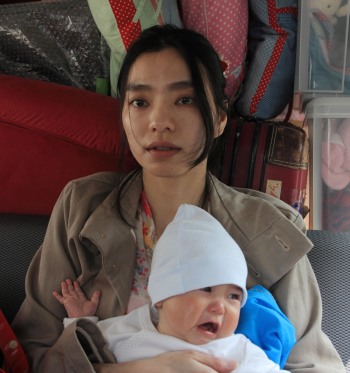 And I was intrigued by how she not only acted, but worked together with the crew on other things as well. For example she contributed a lot to the set design, and if you look at the set of the house in which a big part of the film is shot, most of the stuff you see she actually brought with her from her own home. She was much involved in how that set was decorated.
And I was intrigued by how she not only acted, but worked together with the crew on other things as well. For example she contributed a lot to the set design, and if you look at the set of the house in which a big part of the film is shot, most of the stuff you see she actually brought with her from her own home. She was much involved in how that set was decorated.
AV: The story her character goes through is a terrible one, you don't ever want to be in a situation like that. Is it an existing affliction which Kotoko suffers from, a known form of schizophrenia perhaps?
Tsukamoto Shinya: We didn't really work from that angle, it's rather that I used a phenomenon which fitted the themes of my own work, a possibility to show a good side and a bad side simultaneously of a person, of people. From a cinematic point of view what she sees is not so weird, especially when taking my other films into account. But aside from all that, Cocco herself really suffers from this "double vision" phenomenon on occasion. It is indeed a known affliction but it is hard to explain medically what happens with her at such moments.
AV: Beg pardon? When you said earlier that you based the movie on her inner visions I didn't realize that you meant it literally!
Tsukamoto Shinya: It's true though. During the interviews I had with her she described to me what she feels and sees whenever a "double vision" happens, and we used that in the film.
AV: Wow... With such a heavy subject matter, I am really impressed with the amount of humor you managed to work into "Kotoko". The audience at my screening really laughed at several good moments. How much of that was planned beforehand, and were you afraid the movie would become too dark otherwise?
Tsukamoto Shinya: Laughed?
AV: Ehm... maybe us Dutch have a really sick sense of humor...
Tsukamoto Shinya: (laughs) Way back when I was still involved in theater, the group I was part of used to do comical skits. Our goal was really to make people laugh. You might not think it when watching my movies though... (we all laugh).
... but to me humor is very important. I never said "we now must put in some jokes" but it just sneaked in naturally from the narrative.
AV: The scene where your character is searching for a towel to give to Kotoko, when she has badly cut herself, is absolutely fantastic in my opinion. In any other movie this would be terrible and tragic but at my screening the audience was doubling over from laughter.
Tsukamoto Shinya: That scene is a good example of trying to release some of the tension. Especially in Japanese society "cutting yourself" is a touchy and uncomfortable subject, so with local audiences in mind I decided we needed some relief there at that point in the story.
AV: In that scene you play one of the characters, and you often act in your own films. Is that because you think you'd be the best actor for those parts, or just for fun, or vanity, or maybe because it cut costs?
Tsukamoto Shinya: Well, even when I was shooting little 8 mm films as a kid, monster movies and such, I'd star in them myself. At the time I was someone who was pretty bad at communicating with other people, I was quite shy. But whenever I acted I noticed I could shake off my shyness, so acting is something that I always like very much to do. I never have a problem with acting in my own films and I get much pleasure from it. I also like acting in other people's movies whenever they ask me to.
And "acting" is of course an important part of the movie as a whole, so if I can participate myself I much like to do it when possible.
AV: I have seen you in several films by other people, like Shimizu Takashi's "Marebito" for example. How does that come about? Do you actually audition for roles or are you approached to do them?
Tsukamoto Shinya: What most often happens is this: a director has seen me in another film, and based on that they think I am the right person for their movie. And if it is a director whose work I like I am glad to work for him.
AV: I once posted a quiz on the ScreenAnarchy website where I took five screenshots of you from different films and people had to guess which films they were from. And readers complained that it was damn hard because in four of the shots you look exactly the same even though the roles were very different. (we all laugh)
Funnily enough the hardest screenshot was the one where you actually DID look different, sporting a mohawk and a harelip.
Tsukamoto Shinya: Is that quiz still on-line?
AV: It is! Incidentally, the first person to guess all your shots correctly was Gareth Evans, director of "Merantau" and "The Raid". I guess he is a big fan.
Tsukamoto Shinya: (laughing) Can you give me the URL of that page?
AV: Sure, I will write it down for you. (readers, this is the link!)
About your films: when I had seen "A Snake of June" I thought that you were now officially the king of the blue filter and nobody would be able to quite use it like that ever again.
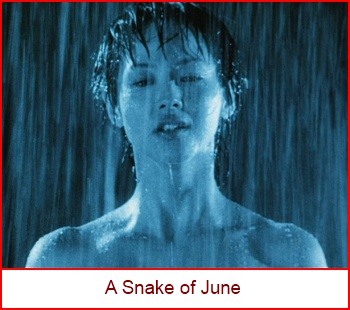 Then as "Kotoko" started, as I saw that beach scene I thought "Oh no, he repeats himself". Blue filter, shaky-cam... But a few seconds later the movie settles into a completely different style, much more colorful and vibrant than any of your other films. How and when do you choose the visual style for your films, and do you ever change it during the shoot?
Then as "Kotoko" started, as I saw that beach scene I thought "Oh no, he repeats himself". Blue filter, shaky-cam... But a few seconds later the movie settles into a completely different style, much more colorful and vibrant than any of your other films. How and when do you choose the visual style for your films, and do you ever change it during the shoot?
Tsukamoto Shinya: Most of the time I already have formed a concept in my mind of what a movie should look like, but there is always room for evaluation when I'm busy making it. For "Tetsuo" it was iron that I had in mind so it had to be like that, black and white... For "Tetsuo II" I was thinking more about melting and glass, so I had to use a bit more color... For "A Snake of June" I initially wanted to do it all monochrome, but in the end I changed that. June is the rainy season in Japan after all, so with all the water on-screen the visual concept evolved to include a lot more blue.
For "Kotoko" there was the city, the landscape of Okinawa and the pinks of Kotoko's room. White was also an important color because of her emotions, which I wanted to be "blank" at some point. So that gave me no less than four different color-schemes to use this time.
AV: Your movies also stand out for containing extreme subject matter. You have made many films, from mainstream fare to arthouse, yet you have always managed to keep your own style and this "extremeness" is part of that. Yet when I see you being interviewed or talking at festivals you always come across as kind, calm, at ease with yourself. Much opposed to what we see in your films actually. Where does this fascination with darkness, violence, eroticism and fetishism come from?
Tsukamoto Shinya: (laughing) I sometimes wonder about that myself! When I start on a film I try to set off the alarm bells within myself, to force myself into action. Film-making takes me away from everyday life and puts me in a special kind of tension, so when I create something while in that state of mind it usually turns out to include such extreme emotions and themes, they tend to sneak in. When I make films I'm in a separate timezone almost, outside of any "normal" situation. You could call it a Jet Coaster if you like... and that plays a part in things getting a little out of hand sometimes.
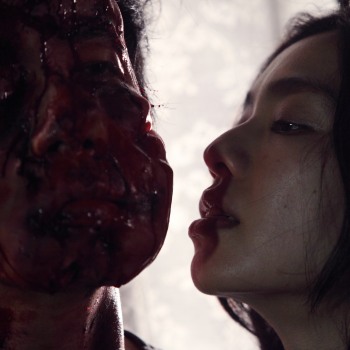 AV: I often hear directors complain that they never are able to create the films they wanted to make, so I wonder how you always manage to get your films produced with all their extreme content? Take "Kotoko" for instance: not an easy film, not an easy subject, quite probably a risky investment for investors... Don't you have much difficulties finding money?
AV: I often hear directors complain that they never are able to create the films they wanted to make, so I wonder how you always manage to get your films produced with all their extreme content? Take "Kotoko" for instance: not an easy film, not an easy subject, quite probably a risky investment for investors... Don't you have much difficulties finding money?
Tsukamoto Shinya: In the past I used to try to get funding the traditional way using the officially existing circuits, through pre-sales, finding sponsors and investors, but I've never managed to get a film made that way. The reason for that is that during the development stage of my films I can never make clear to people what kind of film it will become, also because I often don't know it myself yet. By now people have seen several of my films already so you'd think they would now what they are in for, but then it turns out I am working on a new challenge, something I haven't done before, and then I cannot get a new project financed because investors don't know what the end result will be like. (laughs).
So in the end I will just say OK, then I'll just do it myself again. That way it goes much faster and I can get much more done.
AV: But in that case, where does the money come from then?
Tsukamoto Shinya: From myself. I fund my films with my own money.
AV: Wow... if that works, that is very cool! In "Kotoko" I also noticed how your character is on the receiving end of a lot of damage. For some scenes you are covered in some incredible special effects make-up. Was that a reason for you to play that part, did it provide a new challenge for you?
Tsukamoto Shinya: That aspect wasn't that new to me to be honest, as I've had quite some experience with looking beaten-up in the past already. Especially seventeen years ago on "Tokyo Fist" I looked almost as bad as in "Kotoko" at times, although the themes of the two movies are entirely different. What was new to me was the context in which this make-up was used.
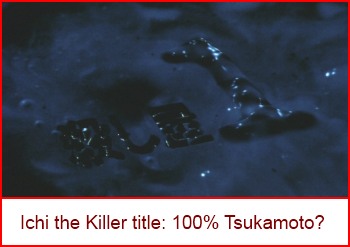 AV: I am getting a time warning so I need to move to the last few questions. Earlier this week I spoke with Miike Takashi (here is a link to THAT interview), and he told me some anecdotes about working with you on "Ichi the Killer". On the commentary track of the DVD, when the film's title emerges from a puddle of sperm Mr. Miike says: "Shinya Tsukamoto provided the sperm, he always gets very excited when he visits my set". What is your reaction to that?
AV: I am getting a time warning so I need to move to the last few questions. Earlier this week I spoke with Miike Takashi (here is a link to THAT interview), and he told me some anecdotes about working with you on "Ichi the Killer". On the commentary track of the DVD, when the film's title emerges from a puddle of sperm Mr. Miike says: "Shinya Tsukamoto provided the sperm, he always gets very excited when he visits my set". What is your reaction to that?
Tsukamoto Shinya: Ha, I can only wish I would be able to produce that much sperm! (we all laugh)
AV: Miike Takashi also said that you eat a lot of liver to build up energy when you start on a new project, but that this causes you to get big nosebleeds. So whenever he ran out of fake blood on the set of "Ichi the Killer" he just gave you some liver and you would get a nosebleed, and he then used your blood. Again, what is your reaction?
Tsukamoto Shinya: (laughs out loud) Miike-san has never given me liver, ever! That story is entirely not true. Well, entirely... it IS true that I love to eat liver. I would have appreciated it a lot if he HAD given me some liver during "Ichi the Killer"! (we all laugh)
And on these high spirits we ended the interview. Again I would like to thank the IFFR-pressdesk for arranging the interview and translator extraordinaire Luk van Haute for his stellar services. His general knowledge of Japanese cinema and literature was a big help as always, and it is mainly due to him that the conversation now reads like... a conversation.
I also asked Mr. Tsukamoto to pose mean and scary for a picture (we all know he can be the creepiest of villains when necessary) but the attempt failed, resulting in the portrait below.
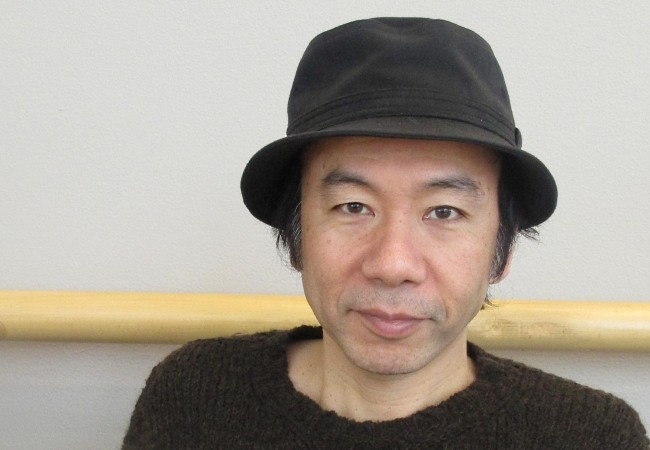

Do you feel this content is inappropriate or infringes upon your rights? Click here to report it, or see our DMCA policy.






